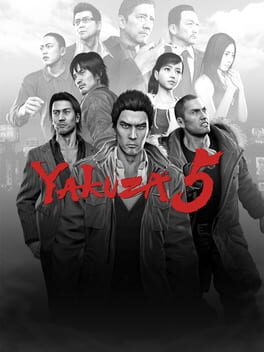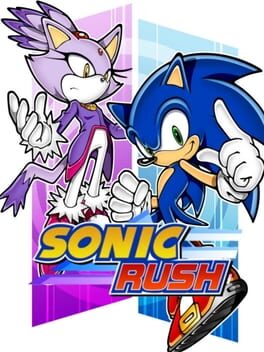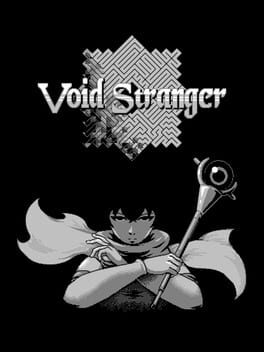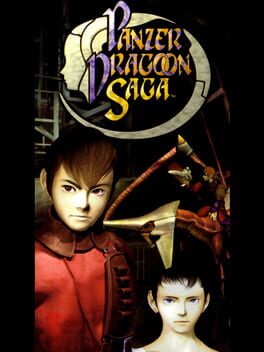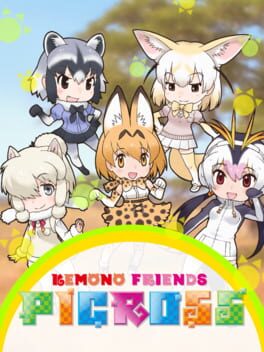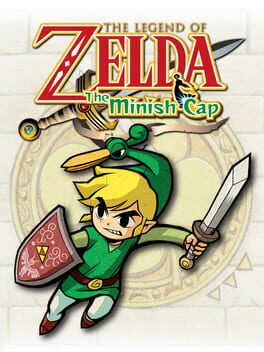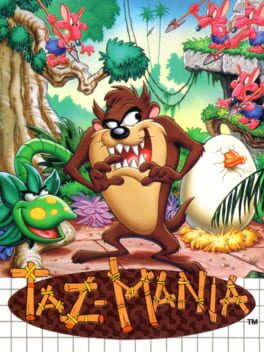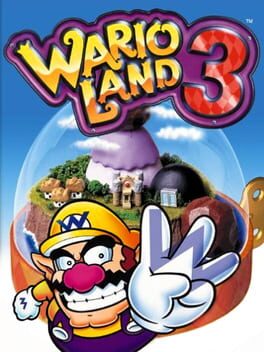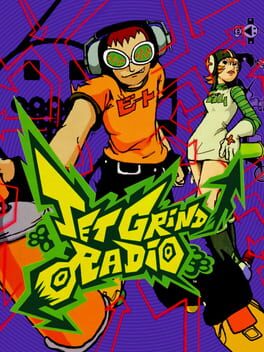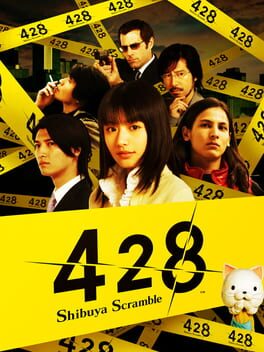SlapOnToast
1167 Reviews liked by SlapOnToast
Yakuza 5
2012
https://i.imgur.com/AbGZYCb.png
Game's heavier than a honey baked ham!!!
For every moment in Yakuza 5 that lead me into thinking I was playing an untamed vortex of passion and uncompromised vision, there were two-to-five other uncomplimentary moments that felt like spinning plates and taking the meandering narrative for walkies. Spreads its roots far & wide across so many ideas and gameplay concepts that, on paper, scans as a maximalist daydream I'd love to lose myself in, but all of it feels so perfunctory and checklisty. Fifty different minigames to micromanage and level up in individually to access Harder Levels of said minigames - - - Vidcon Gospel since time immemoria but my patience has limits :(
Haruka's chapter was probably my personal standout, if only with thanks to how vastly different her story played to any character to come before. The rhythm battles were so fun albeit with the game's slim tracklist, and her substories took on a refreshing dynamic too. The combat in these games has never impressed me but I'd much rather play an unimpressive rhythm game than a brawler I've lost heart in. From a narrative perspective, it is infuriatingly complacent with the practices Japanese idol industry in a way I find legitimately toothless in a series that tends to dedicate fisticuffs to rooting out corruption and it makes Haruka's characterisation weaker as a result.
When came the Shinada chapter I was desperately hoping the end credits would finally begin to roll, which is a shame because he and Koichi's dynamic is probably my favourite spark of character chemistry in the entire series.
I in complete honesty couldn't tell you a single thing that happened in the final hours. This was a game I had started months ago and it rather hilariously demanded for me to recall with perfect clarity a cloak and dagger conspiracy that happened in the initial chapters. The overarching story was a wash for me but I much preferred when the leading cast were locked in their own little bubbles, & exploring their own vignettes about dreams lost & worth aspiring 4. Truly believe that in another world, this would have been a younger me's One Playstation 3 Game For The Month and I'd have completely melted into it - but sadly, I had to play this in incredibly granular sessions that largely felt like clocking in for community service.
Game's heavier than a honey baked ham!!!
For every moment in Yakuza 5 that lead me into thinking I was playing an untamed vortex of passion and uncompromised vision, there were two-to-five other uncomplimentary moments that felt like spinning plates and taking the meandering narrative for walkies. Spreads its roots far & wide across so many ideas and gameplay concepts that, on paper, scans as a maximalist daydream I'd love to lose myself in, but all of it feels so perfunctory and checklisty. Fifty different minigames to micromanage and level up in individually to access Harder Levels of said minigames - - - Vidcon Gospel since time immemoria but my patience has limits :(
Haruka's chapter was probably my personal standout, if only with thanks to how vastly different her story played to any character to come before. The rhythm battles were so fun albeit with the game's slim tracklist, and her substories took on a refreshing dynamic too. The combat in these games has never impressed me but I'd much rather play an unimpressive rhythm game than a brawler I've lost heart in. From a narrative perspective, it is infuriatingly complacent with the practices Japanese idol industry in a way I find legitimately toothless in a series that tends to dedicate fisticuffs to rooting out corruption and it makes Haruka's characterisation weaker as a result.
When came the Shinada chapter I was desperately hoping the end credits would finally begin to roll, which is a shame because he and Koichi's dynamic is probably my favourite spark of character chemistry in the entire series.
I in complete honesty couldn't tell you a single thing that happened in the final hours. This was a game I had started months ago and it rather hilariously demanded for me to recall with perfect clarity a cloak and dagger conspiracy that happened in the initial chapters. The overarching story was a wash for me but I much preferred when the leading cast were locked in their own little bubbles, & exploring their own vignettes about dreams lost & worth aspiring 4. Truly believe that in another world, this would have been a younger me's One Playstation 3 Game For The Month and I'd have completely melted into it - but sadly, I had to play this in incredibly granular sessions that largely felt like clocking in for community service.
In a board meeting somewhere within Konami's headquarters, someone said they should just make Symphony of the Night again, and shrink it small enough to fit on a little cartridge on a system with literally no soundchip worth uttering a single syllable about.
...and well, they sure did. They made Symphony of the Night again, while exasperating my least favorite aspect of the second half of that dear entry in the franchise. They made an insanely dull version of the same castle, down to the point where one of the side quests is literally tracking down some furniture that got loose, because Dracula forgot to set up auto-pay for his maids and skeleton butlers while he was busy shoveling dirt in his mouth. The skeleton hangout with the cool Crocomire skull can only do so much as to alleviate the pain of constantly mashing shoulder buttons like I'm a Smash Bros Melee player to traverse two whole castles filled with some of the most annoying navigation, and nyquil-laced boss fights you ever did see.
In the meantime, we got "Just Belmont" over here who's actually Alucard gaslighting me and everyone else, because I guess he's just hilarious like that. The blue sexual energy he radiates along with his allergic reaction to water does little to sway me away from the fact that this is some kind of ruse, especially when he's using a name like that compared to the one he'd take while a part of a Japanese secret agency specialized in killing Draculas. I just wish he could bother to use more than just the whip, where in a standard playthrough you're only going to bother using the more damaging ones and only switch to the charging one when you need to destroy walls. This is probably prior to needing to take another scenic route to trek through the same areas like groundhog day, because without a walkthrough you're constantly smashing your face into roadblocks and locked doors. Locked doors that literally don't start opening, until about 80% through the game maybe judging by my terrible perception of time.
Okay, so we successfully made Symphony of the Night and slapped it on a Game Boy Advance cartridge. We got all these fancy shmancy effects popping off on that tiny-ass not-backlit screen, and even made them garishly bright so those little shits at IGN and Gamespot can stop complaining about the darkness imprisoning them and all the horror that they see. Oh man, oh god! We don't have enough capacity to get actual music going on here though, because the system runs it's music through software! Well let's phone up our old friend the Game Boy Color soundchip, truly they could help a sister out in need. It's a fun little soundchip that can make some pumping tunes when utilized properly. The word of the day is "properly", because to this day HoD is the only mainline Castlevania to never see it's soundtrack downloaded onto any of my storage drives. This isn't because the music is lower sound quality, it's because the compositions are straight up garbage. When it's not making me raise my eyebrow at it via it's terrible note selection, it blends with the background with tedious droning and becomes unmentionable. This is a seriously damning quality to have as a Castlevania, because that's something I couldn't even say about Haunted Castle, The Adventure, or Judgment.
That said, I can understand the artistic quality behind such a fumbly bumbly cacophony that makes up the noise in this game. I know what the subtitle is, and I understand completely. I'm one of the few people who will go down with the ship with Yuzo Koshiro and the RNG machines he used for SoR3, and I can see why kid's love Cinnamon Toast Crunch. The fact of the matter though, is that I did not enjoy it's company, especially when I'm constantly getting mixed up by a double map where the differences were essentially just some coats of paint, and a different swath of minions to deal with. For how much it could've done with atmosphere, it ended up just being another annoyance that I could've lived without, I'm sorry to say.
HoD is one of those games I remember getting acclaimed on G4 back then, at least by Victor Lucas of Judgment Day. It makes sense, the public wanted more SotN and they indeed got more of it. As the days march onward with us now having four more IGAvanias we could play on GBA or DS, and the ability to play SotN itself on basically any thumbtack if you know what an emulator looks like, HoD feels like it starts to slide more and more down the pole of quality and crashing to the bottom of a staircase. It's role as a training program and stepping stone towards Aria is appreciated, but as a Castlevania, it's one that I think I won't be replaying again for quite some time. It has almost nothing to show for itself that isn't just "SotN, but kinda crap", and the qualities it does have to stand out are unwelcomed to my eardrums.
Go home Alucard, you're drunk. Get off that synthesizer, you're embarrassing yourself. GET OFF THE DANG ROOF!
...and well, they sure did. They made Symphony of the Night again, while exasperating my least favorite aspect of the second half of that dear entry in the franchise. They made an insanely dull version of the same castle, down to the point where one of the side quests is literally tracking down some furniture that got loose, because Dracula forgot to set up auto-pay for his maids and skeleton butlers while he was busy shoveling dirt in his mouth. The skeleton hangout with the cool Crocomire skull can only do so much as to alleviate the pain of constantly mashing shoulder buttons like I'm a Smash Bros Melee player to traverse two whole castles filled with some of the most annoying navigation, and nyquil-laced boss fights you ever did see.
In the meantime, we got "Just Belmont" over here who's actually Alucard gaslighting me and everyone else, because I guess he's just hilarious like that. The blue sexual energy he radiates along with his allergic reaction to water does little to sway me away from the fact that this is some kind of ruse, especially when he's using a name like that compared to the one he'd take while a part of a Japanese secret agency specialized in killing Draculas. I just wish he could bother to use more than just the whip, where in a standard playthrough you're only going to bother using the more damaging ones and only switch to the charging one when you need to destroy walls. This is probably prior to needing to take another scenic route to trek through the same areas like groundhog day, because without a walkthrough you're constantly smashing your face into roadblocks and locked doors. Locked doors that literally don't start opening, until about 80% through the game maybe judging by my terrible perception of time.
Okay, so we successfully made Symphony of the Night and slapped it on a Game Boy Advance cartridge. We got all these fancy shmancy effects popping off on that tiny-ass not-backlit screen, and even made them garishly bright so those little shits at IGN and Gamespot can stop complaining about the darkness imprisoning them and all the horror that they see. Oh man, oh god! We don't have enough capacity to get actual music going on here though, because the system runs it's music through software! Well let's phone up our old friend the Game Boy Color soundchip, truly they could help a sister out in need. It's a fun little soundchip that can make some pumping tunes when utilized properly. The word of the day is "properly", because to this day HoD is the only mainline Castlevania to never see it's soundtrack downloaded onto any of my storage drives. This isn't because the music is lower sound quality, it's because the compositions are straight up garbage. When it's not making me raise my eyebrow at it via it's terrible note selection, it blends with the background with tedious droning and becomes unmentionable. This is a seriously damning quality to have as a Castlevania, because that's something I couldn't even say about Haunted Castle, The Adventure, or Judgment.
That said, I can understand the artistic quality behind such a fumbly bumbly cacophony that makes up the noise in this game. I know what the subtitle is, and I understand completely. I'm one of the few people who will go down with the ship with Yuzo Koshiro and the RNG machines he used for SoR3, and I can see why kid's love Cinnamon Toast Crunch. The fact of the matter though, is that I did not enjoy it's company, especially when I'm constantly getting mixed up by a double map where the differences were essentially just some coats of paint, and a different swath of minions to deal with. For how much it could've done with atmosphere, it ended up just being another annoyance that I could've lived without, I'm sorry to say.
HoD is one of those games I remember getting acclaimed on G4 back then, at least by Victor Lucas of Judgment Day. It makes sense, the public wanted more SotN and they indeed got more of it. As the days march onward with us now having four more IGAvanias we could play on GBA or DS, and the ability to play SotN itself on basically any thumbtack if you know what an emulator looks like, HoD feels like it starts to slide more and more down the pole of quality and crashing to the bottom of a staircase. It's role as a training program and stepping stone towards Aria is appreciated, but as a Castlevania, it's one that I think I won't be replaying again for quite some time. It has almost nothing to show for itself that isn't just "SotN, but kinda crap", and the qualities it does have to stand out are unwelcomed to my eardrums.
Go home Alucard, you're drunk. Get off that synthesizer, you're embarrassing yourself. GET OFF THE DANG ROOF!
Sonic Rush
2005
I love this game, but damn does it get on my nerves sometimes! Does all the cool things a Sonic game, now with the power of the Nintendo DS and dual screens. Some of level design and bosses are where I get a little upset at this game, but not for too long cuz I love the soundtrack and boost style. And to think this wasn't the first Sonic Team developed for the DS. Tsk tsk more people need to play Feel the Magic...
Super Mario RPG
2023
There's definitely a vibe to Super Mario RPG. This isn't nostalgia talking. I didn't play the game until 2017, on the SNES Mini. But the music, the writing, the sequence of tasks you have to perform... this is the game Squaresoft made when they thought Final Fantasy VII was going to be an N64 project. It's a silly, kid-friendly fairytale RPG, but there's a real through line from this to both Final Fantasy VII and Ocarina of Time. It's not that games don't make us feel like they used to when we kids. They just stopped making them like this.
So much of what I love about Mario RPG is in its presentation. It was a real technical achievement on the SNES, but that meant it was pushing against boundaries in every direction. I mean, really, this was an isometric RPG with pre-rendered graphics and a very prominent jump button, and that was about as 3D as you were getting in an adventure game back then. Characters had very limited poses to communicate with, and they opted to keep Mario mute as he gave direct responses to NPCs, expressing himself through pantomime and, again, his trademark jumping. It's a bit of a puppet show, and it's deeply endearing.
Removing the limitations of an old game is always hazardous, and particularly when that carries so much of its appeal. New developers, ArtePiazza, have earned Square Enix's trust from decades of ports and remakes, spanning all the way back to the Super Famicom version of Dragon Quest III, and they've taken great pains to stay faithful to the original game's charm, though you can feel the stress they were under, taking Zoom meetings with Shigeru Miyamoto and Tetsuya Nomura. Playing this game is accepting that it's going to look like a Fancy Modern version, discarding the funny old sprites, and past that, there's very little for the old guard to grumble about. Hell, the bulk of the characters still look like beautifully crude old CGI.
There's a suite of quality of life tweaks that take much of the old SNES RPG pain out of the experience. Downed characters can be swapped mid-battle, timing-based attacks now give a little heads up to help you figure out when you're supposed to press A, and the game's constantly auto-saving. It's less of a commitment. Yes, I like the tension that comes from not knowing when you'll be allowed to turn a game off, but I was still using save states when I played on the SNES Mini. I'm not kidding on that we had it better off in the nineties.
I really don't know what younger audiences will make of this, though. Seeing copies sitting on the shelves of Smyths Toys, with the no-nonsense "MARIO RPG" title and stark box art, it doesn't come with a disclaimer that says "THIS CONTROLS A BIT LIKE LANDSTALKER". If you're not already well versed in 16-Bit games, the game could feel really stiff and awkward. This is a game before there was a consensus on what Mario sounded like. Are kids going to understand why he's not whooping and exclaiming with every jump? Let's face facts. People who have first-hand experience of the 1996 release line-up are fucking old now. Most people buying Mario games aren't us. Are they going to understand? And if not, why doesn't Princess Peach look like the crude assembly of geometric shapes that she did on the SNES? There's concessions made for the modern perception of the Mario brand here, and they really clash against the eight-way movement system and silent text boxes. I think it's a real downer that they couldn't fully commit to the bit.
There's new FMV cutscenes that mimic the movement and animation of the original. I'm sure there's a certain kind of player who will see these and gasp in awe. They're not me, though. I don't think they're anywhere near as charming when freed of the static perspective. Again, this isn't a game that I've had a long relationship with. If I'd played the game at a more impressionable age, and fantasised about a more tangible version of its world, maybe it would have done something for me. I just like the old approach more.
So, it's bittersweet in all. A compromise. A better-playing version of a game I really like, but a version I like less overall. When I next want to play Mario RPG, I honestly don't know whether I'll play this or the SNES version. In all likelihood, I'll grumble about the indecision and play something else altogether. That's a shame. The game's really good, I like it a lot, and I respect the people who worked on this new version. If you want to play Mario RPG, I think the Switch release is the much more reasonable recommendation. But if you're like me, and you admire what developers were able to achieve on more rudimentary hardware, and the amusing, lovable games all those limitations lead to, I think you know that you'd be denying yourself something for the sake of convenience.
Never mind me, though. I'm a nut. Go have fun.
So much of what I love about Mario RPG is in its presentation. It was a real technical achievement on the SNES, but that meant it was pushing against boundaries in every direction. I mean, really, this was an isometric RPG with pre-rendered graphics and a very prominent jump button, and that was about as 3D as you were getting in an adventure game back then. Characters had very limited poses to communicate with, and they opted to keep Mario mute as he gave direct responses to NPCs, expressing himself through pantomime and, again, his trademark jumping. It's a bit of a puppet show, and it's deeply endearing.
Removing the limitations of an old game is always hazardous, and particularly when that carries so much of its appeal. New developers, ArtePiazza, have earned Square Enix's trust from decades of ports and remakes, spanning all the way back to the Super Famicom version of Dragon Quest III, and they've taken great pains to stay faithful to the original game's charm, though you can feel the stress they were under, taking Zoom meetings with Shigeru Miyamoto and Tetsuya Nomura. Playing this game is accepting that it's going to look like a Fancy Modern version, discarding the funny old sprites, and past that, there's very little for the old guard to grumble about. Hell, the bulk of the characters still look like beautifully crude old CGI.
There's a suite of quality of life tweaks that take much of the old SNES RPG pain out of the experience. Downed characters can be swapped mid-battle, timing-based attacks now give a little heads up to help you figure out when you're supposed to press A, and the game's constantly auto-saving. It's less of a commitment. Yes, I like the tension that comes from not knowing when you'll be allowed to turn a game off, but I was still using save states when I played on the SNES Mini. I'm not kidding on that we had it better off in the nineties.
I really don't know what younger audiences will make of this, though. Seeing copies sitting on the shelves of Smyths Toys, with the no-nonsense "MARIO RPG" title and stark box art, it doesn't come with a disclaimer that says "THIS CONTROLS A BIT LIKE LANDSTALKER". If you're not already well versed in 16-Bit games, the game could feel really stiff and awkward. This is a game before there was a consensus on what Mario sounded like. Are kids going to understand why he's not whooping and exclaiming with every jump? Let's face facts. People who have first-hand experience of the 1996 release line-up are fucking old now. Most people buying Mario games aren't us. Are they going to understand? And if not, why doesn't Princess Peach look like the crude assembly of geometric shapes that she did on the SNES? There's concessions made for the modern perception of the Mario brand here, and they really clash against the eight-way movement system and silent text boxes. I think it's a real downer that they couldn't fully commit to the bit.
There's new FMV cutscenes that mimic the movement and animation of the original. I'm sure there's a certain kind of player who will see these and gasp in awe. They're not me, though. I don't think they're anywhere near as charming when freed of the static perspective. Again, this isn't a game that I've had a long relationship with. If I'd played the game at a more impressionable age, and fantasised about a more tangible version of its world, maybe it would have done something for me. I just like the old approach more.
So, it's bittersweet in all. A compromise. A better-playing version of a game I really like, but a version I like less overall. When I next want to play Mario RPG, I honestly don't know whether I'll play this or the SNES version. In all likelihood, I'll grumble about the indecision and play something else altogether. That's a shame. The game's really good, I like it a lot, and I respect the people who worked on this new version. If you want to play Mario RPG, I think the Switch release is the much more reasonable recommendation. But if you're like me, and you admire what developers were able to achieve on more rudimentary hardware, and the amusing, lovable games all those limitations lead to, I think you know that you'd be denying yourself something for the sake of convenience.
Never mind me, though. I'm a nut. Go have fun.
Void Stranger
2023
Panzer Dragoon Saga
1998
sorry 4 the beyond tired analogy but this game is like a frail and defiant flower blooming uniquely through the rubble of its own technical limitations. It's simultaneously a nearly forgotten relic and an undeniable genesis point / clear creative influence for countless other game achievements for both the fractured Team Andromeda artists themselves and other inspired gamedevs (Rez, the team ICO oeuvre, thatgamecompany, from software, etc). An eerie and sensitive story with so much more brevity and respect for player time than typical JRPGS (probably both by intent and as a technical necessity) but also an unparalleled amount of spaciousness and quiet power. The still unimitated positional combat system is a complete revelation and so so beautiful in its graphic framing and expressivity. The closest thing I can think of is the (also spellbinding) Evrae battle from FFX, but magnified tenfold and constantly eclipsing the presumed limits of its prior majesty over the course of an entire game. The dynamism and propulsive grace within the compositions of each battle tableau grant an ATB-based jrpg the sensoral exhilaration of an Ace Combat game. The fact that the balancing is a bit too easy hardly matters when PDS remains such a bold declaration and unmatched proof of concept for an entire school of systemic evolutions it was denied the chance to ever iterate upon. These battles set my imagination on fire!!!
The game is tragically inaccessible and unretrievable (the source code is completely lost and the effort/interest level required to reverse engineer a faithful re-release seems unlikely), but it also feels fitting for something with such a lamentful cadence to end up as a lingering piece of gaming hauntology. if fucking bluepoint or whoever decide to remake this absolutely peerless achievement in HD i will officially detonate the vest.
Emulate on Yabause/Yaba Sanshiro, SSF, or Satourne, the full game runs extremely well now! if you are having issues 4 real find me on social and message me and i will walk your ass through the whole process because truly everyone interested in games should play this game
The game is tragically inaccessible and unretrievable (the source code is completely lost and the effort/interest level required to reverse engineer a faithful re-release seems unlikely), but it also feels fitting for something with such a lamentful cadence to end up as a lingering piece of gaming hauntology. if fucking bluepoint or whoever decide to remake this absolutely peerless achievement in HD i will officially detonate the vest.
Emulate on Yabause/Yaba Sanshiro, SSF, or Satourne, the full game runs extremely well now! if you are having issues 4 real find me on social and message me and i will walk your ass through the whole process because truly everyone interested in games should play this game
Somehow the weakest Picross game I’ve played. Something about the large majority of the puzzles being similar anime girl faces gives the puzzles a distinctly samey feel that really drills home the dull nature of Picross. I fucking love Picross so that’s definitely something that strikes me as irksome. That alongside baby music and character art that really just feels weak and you have an underwhelming package that does the Picross name an injustice.
Before the days of the Switch, the lines between console and handheld gaming were much more defined. Console games represented the cutting edge, they felt boundless and expansive. Handheld gaming on the other hand, was a medium defined by its restrictions. These games were small, both in terms of storage space and literal screen real size. They had to be designed to be compact, with shorter on-the-go play sessions in mind. As a kid, that didn’t really bother me. The convenience of being able to play video games in my bed trumped any interest in spectacle. But I think there’s also a real magic to handheld games, one that’s kind of been lost to time. There’s an intimacy to the experience, that tiny screen so close to your eyes, the speakers right next to your ears, the entirety of the system in your hands. It felt oddly personal, these miniature worlds you can fit in your pocket, seemingly crafted just for you.
I think about that a lot when replaying Minish Cap, a game that revels in its smallness. Its map is tiny but dense, inviting you to appreciate the nooks and crannies just as much as the larger picture. Thats where this iteration of Hyrule truly comes alive, a land that breathes in its smallest moments. The size-changing mechanic is more than just a gimmick, it’s a statement. This a game about appreciating scale, about minding the little details all around you. Behind every character, every wall, every tree stump could be a connection, a secret, an adventure, hidden in plain sight. While I’ve certainly explored bigger games, few are those I feel as close to as this one. Every pixel feels familiar, like I’ve traveled through it a million times before. If I’m lucky, I’ll get to travel through it a million times more.
I think about that a lot when replaying Minish Cap, a game that revels in its smallness. Its map is tiny but dense, inviting you to appreciate the nooks and crannies just as much as the larger picture. Thats where this iteration of Hyrule truly comes alive, a land that breathes in its smallest moments. The size-changing mechanic is more than just a gimmick, it’s a statement. This a game about appreciating scale, about minding the little details all around you. Behind every character, every wall, every tree stump could be a connection, a secret, an adventure, hidden in plain sight. While I’ve certainly explored bigger games, few are those I feel as close to as this one. Every pixel feels familiar, like I’ve traveled through it a million times before. If I’m lucky, I’ll get to travel through it a million times more.
Taz-Mania
1992
This Christmas morning I made a big mistake, I got out of bed.
Some kids were over for the afternoon and spotted my CRT setup and asked to play something, it was then I subconsciously went to turn on my Sega Genesis and moved the cursor of my MegaEverdrive's menu to Taz-Mania. I could've simply just put on Sonic 2 or even Rocket Knight Adventures as a form of kid friendly entertainment, but somewhere in my mind I was bent on destruction.
The joke was on me however, as after about ten minutes of them floundering about on the second stage not knowing how to traverse Taz-Mania's leap of faith style platforming, the controller found it's way back to it's owner. They had the time of their life after that, watching me immediately get flattened into the ground by the truck boss entering the stage without warning, and bursting into laughter at the hundreds of times I slammed into obstacles on the minecart stage that could potentially get Battletoads to respond to it's cacophonous mating calls that make up it's poor attempt at a dynamic soundtrack. It's a bit hard to describe, it's kind of like if the world's most flaccid digitized slide whistle accompanied your every movement. It's a far cry from Desert Demolition's masterful attempt on the same system.
I felled Taz-Mania this day, but at what cost? My stomach has exploded so many times from mean-spirited bomb placement, I've gotten hypothermia in real life from the amount of times I fell in frozen water, and have been zapped dozens of times by pulling the wrong lever.
Well... at least they had a good time.
Some kids were over for the afternoon and spotted my CRT setup and asked to play something, it was then I subconsciously went to turn on my Sega Genesis and moved the cursor of my MegaEverdrive's menu to Taz-Mania. I could've simply just put on Sonic 2 or even Rocket Knight Adventures as a form of kid friendly entertainment, but somewhere in my mind I was bent on destruction.
The joke was on me however, as after about ten minutes of them floundering about on the second stage not knowing how to traverse Taz-Mania's leap of faith style platforming, the controller found it's way back to it's owner. They had the time of their life after that, watching me immediately get flattened into the ground by the truck boss entering the stage without warning, and bursting into laughter at the hundreds of times I slammed into obstacles on the minecart stage that could potentially get Battletoads to respond to it's cacophonous mating calls that make up it's poor attempt at a dynamic soundtrack. It's a bit hard to describe, it's kind of like if the world's most flaccid digitized slide whistle accompanied your every movement. It's a far cry from Desert Demolition's masterful attempt on the same system.
I felled Taz-Mania this day, but at what cost? My stomach has exploded so many times from mean-spirited bomb placement, I've gotten hypothermia in real life from the amount of times I fell in frozen water, and have been zapped dozens of times by pulling the wrong lever.
Well... at least they had a good time.
Wario Land 3
2000
The fourth Wario Land is a personal classic, but even I must bow my head and acknowledge 3's superior dedication to unconventional platforming status. The experiment that began with Wario Land II reached its natural conclusion here, and the end result makes 4's health meter look bog standard in comparison. In this land, reward and punishment are one and the same- bizarre, often grotesque perversions of Wario's sprite and, by proxy, the way that he has to look at the world around him. Whether these transformations are powerups or power... downs depends entirely on the situation. Becoming a spring allows Wario to reach higher-up areas, just make sure to avoid it when trying to make your way downwards. Invisibility lets him bypass motion-detecting security doors, but incidentally turns rudimentary platforming into a challenge. Each of the dozen-or-so abilities can be described in a similar double-edged fashion, but their cleverness really has to be seen to be believed. Figuring out which transformation you need while figuring out which key you need while also figuring out how to get that transformation in the appropriate spot (and, if necessary, even how to get rid of it once you're done) as every bite-sized stage unravels and reveals its deliciously tricky nature. When state transitions, the very foundation of a platformer, are a puzzle in and of themselves, the level design comes naturally, and Wario Land 3 leaves no stone unturned while constructing its areas to enhance the game's supreme mechanical cohesion. Well, except...
Where it loses me: returning to previous stages after an unlock. These come in the form of Samus Aranesque moveset additions or more unique contextual changes to the world map, and are all almost unanimously disappointing. Instead of requiring the player to evaluate what's different when coming back to a familiar place, usually some obstacle near the entrance has been removed, which lets Wario access, in essence, an entirely new level. It's hard to fault the game for this decision, as forcing inter-playsession analysis is typically seen as a sin against the tenants of handheld gaming, but it still feels like the only blight on its otherwise hyper-focused design. In retrospect, 4's "hurry up" sections present a solution to this problem: portions of the game that reward observant players who are able to predict level mutations before they happen without breaking the pick-up-and-play mantra. Of course, including these means Wario has to be capable of getting the lead out, which, also in retrospect, creates another conundrum. 3's sluggish Wario is hardly bothered by traditional platforming punishments that serve to slow him down, as he can barely even move in the first place, but 4's agile Wario clashes with the inherently time-consuming nature of transformations. It's an issue that, I, in my infinite wisdom, don't have the solution to, but perhaps it's one that indicates how distinct the series is above all else- it's hard to imagine that guy in red running into anything similar.
Where it loses me: returning to previous stages after an unlock. These come in the form of Samus Aranesque moveset additions or more unique contextual changes to the world map, and are all almost unanimously disappointing. Instead of requiring the player to evaluate what's different when coming back to a familiar place, usually some obstacle near the entrance has been removed, which lets Wario access, in essence, an entirely new level. It's hard to fault the game for this decision, as forcing inter-playsession analysis is typically seen as a sin against the tenants of handheld gaming, but it still feels like the only blight on its otherwise hyper-focused design. In retrospect, 4's "hurry up" sections present a solution to this problem: portions of the game that reward observant players who are able to predict level mutations before they happen without breaking the pick-up-and-play mantra. Of course, including these means Wario has to be capable of getting the lead out, which, also in retrospect, creates another conundrum. 3's sluggish Wario is hardly bothered by traditional platforming punishments that serve to slow him down, as he can barely even move in the first place, but 4's agile Wario clashes with the inherently time-consuming nature of transformations. It's an issue that, I, in my infinite wisdom, don't have the solution to, but perhaps it's one that indicates how distinct the series is above all else- it's hard to imagine that guy in red running into anything similar.
Jet Grind Radio
2000
I'm not sure what's more insane, the fact that this was pretty much Naganuma's first soundtrack or the fact that he hasn't really done much after this came out. But everyone already knows how much of a stylistic gem Jet Set Radio is, so instead I'll go into some of the lesser appreciated details that makes it a great game and try to keep my humming the bassline to a minimum. It's a game that sucks until you're good at it, which is probably the best kind of game there is. It's a real shame that the definition of "intuitive" has switched to "stuff that I get instantly" from "stuff I can pick up on easily," because I much prefer the latter. I really don't want to know everything right off that bat- the act of learning how to do things is what I'm interested in, and is one of the biggest reasons why I like video games as a medium in the first place. Jet Set Radio's rival encounters aren't only an engaging way to make you feel like you're expanding the size of your gang but also a clever method of cluing you in to shortcuts and tricks that you might not have figured out yourself. It's really fulfilling to observe them in a contained setting and then try them out in a real mission, and it's also exactly how watching someone else skate would play out in real life. The maps are initially given to you in bits and pieces, making it satisfying to use your full mastery of the physics and controls during the final few missions which each contain a full map instead of just a section. DJ Professor K is also a particularly genius inclusion. He's great at establishing and then perpetuating the level of energy that the game requires, but more importantly narrates in an aggressively present tense, propping up the setting and your active role in the story in a way you really don't see that often. I like this game too much to do anything but gloss over its pretty glaring problems. The enemies and health system are underdeveloped (they're hazards more than enemies and most of the time your best option is just tanking damage), there's a decent amount of technical problems (there's zero difference between walls you can and can't wall run on), and one really misplaced flashback section (not to mention the lamest final boss ever conceived). By all accounts, it meets my definition of a flawed masterpiece. But who cares? ROCK THAT SHIT, HOMIE!
Super Mario Galaxy
2020
one time i went to school wearing a luma plush keychain on my backpack and the class stoner guy came up to me during gym and pointed at it and said "hey who is that? do you know what thats from?" and i said "mario?" and he said "no....thats the SUPER mario" and then he walked away and we never spoke again
Ok this game is bonkers in the best way. It's a choose your own adventure game in which you can reselect scenes for characters and make different choices to change the paths of other characters. It can be a little trial and error but I absolutely love the idea and how it plays.
The characters are all interesting and very different and it all comes together surprisingly well in the end though I found it a little abrupt.
What really stands out though it that the entire game is made from photographs of real Japanese actors. It almost felt like I was choosing the path of a tv show in a way.
I really enjoyed this a lot and I didn't have high expectations. It's quite long too, took me over 30 hours to see through to the end and has some secret extra stories, one of which is really heart wrenching (I thought the other was terrible) as well as an anime spin off film (which was also terrible). So not perfect but they are optional extras.
All in all this is one of the best visual novels i've played and I highly recommend it.
+ Love the choose your own adventure timeline gameplay.
+ Great characters.
+ The real life photo aspect is wonderful.
- Some of the extras aren't great.
- The ending felt like there should have been a bit more.
The characters are all interesting and very different and it all comes together surprisingly well in the end though I found it a little abrupt.
What really stands out though it that the entire game is made from photographs of real Japanese actors. It almost felt like I was choosing the path of a tv show in a way.
I really enjoyed this a lot and I didn't have high expectations. It's quite long too, took me over 30 hours to see through to the end and has some secret extra stories, one of which is really heart wrenching (I thought the other was terrible) as well as an anime spin off film (which was also terrible). So not perfect but they are optional extras.
All in all this is one of the best visual novels i've played and I highly recommend it.
+ Love the choose your own adventure timeline gameplay.
+ Great characters.
+ The real life photo aspect is wonderful.
- Some of the extras aren't great.
- The ending felt like there should have been a bit more.
Mechanically frustrating and the plot spins around at the end but it’s so damn charming for most of it.
Edit: Revisiting my thoughts years later: I'm spoiled by a skip feature in vns. I get anxious waiting around when I have other things to finish. I have so much stuff to do! I need to skim sometimes.
But the character work is just incredible. You have your sharp rookie detective, who fits out a general charming archetype. You have your overeager young punk who gets in way over his head. You have the cynical, deeply broken scientist struggling between his morals, his love for his family, and his own detached nature. You have perky amnesia girl getting through her day job.
But the true highlight is Minoru Minorikawa, the arrogant journalist. Minoru buys into his own hype. He's the greatest writer the world has known. He doesn't waste his time on pointless stories. But, he'll also write anything on anyone and anywhere. That's where the nuance appears. Minoru will write about every topic. He doesn't waste his time on pointless stories. Thus, every person he interviews or topic he covers is something he considers the most important subject ever crafted. Minoru believes in himself so much, he believes in everyone. He's the most interesting man ever conceived. Utter delight of a bastard man and the 25 hour runtime is worth it just for him.
Edit: Revisiting my thoughts years later: I'm spoiled by a skip feature in vns. I get anxious waiting around when I have other things to finish. I have so much stuff to do! I need to skim sometimes.
But the character work is just incredible. You have your sharp rookie detective, who fits out a general charming archetype. You have your overeager young punk who gets in way over his head. You have the cynical, deeply broken scientist struggling between his morals, his love for his family, and his own detached nature. You have perky amnesia girl getting through her day job.
But the true highlight is Minoru Minorikawa, the arrogant journalist. Minoru buys into his own hype. He's the greatest writer the world has known. He doesn't waste his time on pointless stories. But, he'll also write anything on anyone and anywhere. That's where the nuance appears. Minoru will write about every topic. He doesn't waste his time on pointless stories. Thus, every person he interviews or topic he covers is something he considers the most important subject ever crafted. Minoru believes in himself so much, he believes in everyone. He's the most interesting man ever conceived. Utter delight of a bastard man and the 25 hour runtime is worth it just for him.
